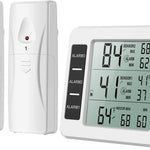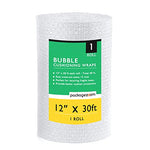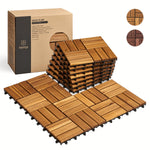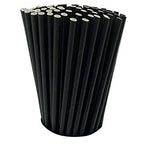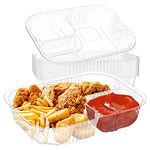You have no items in your shopping cart.
Cardboard is one of the most widely used packaging materials due to its versatility and eco-friendly nature. However, as a responsible citizen, you may often find yourself asking, "Where can I recycle cardboard?" Recycling cardboard not only helps protect the environment but also conserves valuable resources. In this comprehensive guide, we will explore various avenues for recycling cardboard, providing you with all the information you need to make a positive impact. So let's dive in!
Why Should You Recycle Cardboard?
Recycling cardboard offers numerous benefits for both the environment and society. Let's take a closer look at some compelling reasons why recycling cardboard is important:
-
Conserves Resources: By recycling cardboard, we reduce the demand for new raw materials, such as trees, water, and energy, which are used in the production of cardboard. This conservation of resources helps preserve our natural environment.
-
Reduces Landfill Waste: When cardboard is not recycled and ends up in landfills, it contributes to the growing waste problem. By recycling cardboard, we can significantly reduce landfill waste and promote sustainable waste management practices.
-
Saves Energy: The recycling process for cardboard requires much less energy compared to the production of new cardboard. By recycling, we save energy and reduce greenhouse gas emissions, helping combat climate change.
-
Supports the Circular Economy: Recycling cardboard is an integral part of the circular economy, where materials are reused and recycled instead of being discarded. By participating in the recycling process, we contribute to a more sustainable and efficient economy.
-
Creates Job Opportunities: The recycling industry generates employment opportunities in various stages of the recycling process, from collection and sorting to processing and manufacturing. By recycling cardboard, we support the creation of green jobs.
Where Can I Recycle Cardboard at Home?
Recycling cardboard at home is convenient and easy. Here are some options for recycling cardboard from the comfort of your own home:
-
Curbside Recycling: Check if your local waste management service offers curbside recycling for cardboard. They often provide bins or specific collection days for recyclable materials, including cardboard. Make sure to follow their guidelines on how to prepare and separate cardboard for recycling.
-
Local Recycling Drop-Off Centers: Many communities have recycling drop-off centers where you can take your cardboard for recycling. These centers are usually conveniently located and accept a wide range of recyclable materials, including cardboard.
-
Reuse for Storage or Crafts: Before recycling, consider reusing cardboard for storage purposes or arts and crafts projects. Cardboard boxes can be repurposed for organizing items or as material for DIY projects, reducing the need for new materials.
How to Prepare Cardboard for Recycling
Properly preparing cardboard for recycling ensures efficient processing and reduces contamination. Here's how you can prepare your cardboard for recycling:
-
Remove Non-Cardboard Materials: Before recycling, remove any non-cardboard materials from the cardboard, such as tape, labels, or plastic packaging. These materials can interfere with the recycling process and should be disposed of separately.
-
Flatten the Cardboard: Flatten the cardboard boxes to save space and facilitate transportation. Breaking down the boxes also makes it easier for recycling centers to process and handle the cardboard.
-
Check for Local Guidelines: Different recycling programs may have specific guidelines for cardboard recycling. Check with your local recycling center or waste management service to ensure you are following their instructions correctly.
Curbside Recycling Programs
Curbside recycling programs are a convenient way to recycle cardboard and other recyclable materials. Many municipalities offer curbside pickup services, making it easy for residents to participate in recycling efforts. Here's how curbside recycling programs work:
-
Check Local Guidelines: Research the guidelines provided by your local waste management service or municipality to understand the specific requirements for cardboard recycling. They may provide information on collection schedules, bin color-coding, and acceptable types of cardboard.
-
Separate Cardboard from Other Materials: Place your cardboard in the designated recycling bin or container. Some programs require you to separate cardboard from other recyclables, while others accept mixed recycling. Follow the guidelines provided by your local recycling program.
-
Follow Preparation Instructions: Ensure your cardboard is properly prepared by removing any non-cardboard materials and flattening the boxes. Familiarize yourself with any additional instructions specific to your local recycling program.
-
Place Bin for Collection: On the designated collection day, place your recycling bin or container at the curb for pickup. Make sure it is easily accessible for collection vehicles.
-
Educate Yourself: Stay informed about any updates or changes to your local curbside recycling program. Changes in recycling guidelines or schedules may affect how you recycle cardboard and other materials.
Local Recycling Centers
In addition to curbside recycling programs, local recycling centers play a vital role in cardboard recycling. These centers accept various recyclable materials, including cardboard, and ensure they are processed correctly. Here's what you need to know about local recycling centers:
-
Find Local Recycling Centers: Search online or contact your local waste management service to find recycling centers near you. They may provide a list of authorized centers that accept cardboard for recycling.
-
Verify Accepted Materials: Before visiting a recycling center, check if they accept cardboard and inquire about any specific requirements or guidelines for cardboard recycling. Some centers may only accept certain types of cardboard, such as corrugated cardboard.
-
Sort and Prepare: Sort and prepare your cardboard according to the center's guidelines. Remove any non-cardboard materials and ensure the cardboard is clean and dry.
-
Transport the Cardboard: Load your prepared cardboard into your vehicle and transport it to the recycling center. If the center is far from your location, consider organizing a larger load to minimize trips and reduce fuel consumption.
-
Follow Instructions at the Center: Once at the recycling center, follow the instructions provided by the staff. They will guide you on where to deposit the cardboard and may provide additional information on other recyclable materials accepted.
-
Learn About Other Recycling Services: Take the opportunity to learn about other recycling services and resources available at the recycling center. They may offer recycling programs for electronics, hazardous waste, or other materials.
Retail Store Drop-Offs
Retail store drop-off programs are an increasingly popular option for recycling cardboard, especially when it comes to packaging materials. Many large retailers have implemented programs that allow customers to conveniently drop off their cardboard for recycling. Here's how retail store drop-offs work:
-
Research Participating Stores: Identify the retail stores in your area that offer cardboard recycling drop-off programs. You can check their websites or contact their customer service for information about their recycling initiatives.
-
Verify Accepted Cardboard: Different stores may have specific guidelines regarding the types of cardboard they accept. Some may only accept packaging materials, while others may accept various types of cardboard. Ensure your cardboard aligns with their guidelines.
-
Prepare Cardboard: Prepare your cardboard by removing non-cardboard materials and flattening the boxes. Some stores may have size restrictions, so it's important to check their requirements beforehand.
-
Visit the Store: Bring your prepared cardboard to the designated drop-off location at the store. Most stores have designated areas or recycling bins near the entrance where you can deposit your cardboard.
-
Follow Store Instructions: Follow any instructions provided by the store regarding the drop-off process. They may have specific procedures or signage to guide you.
-
Take Advantage of Additional Services: Some retail stores offer recycling programs for other materials, such as plastic bags or batteries. Take the opportunity to recycle these items if available at the store.
Community Recycling Events
Community recycling events provide an excellent opportunity to dispose of cardboard and other recyclable materials in a sustainable manner. These events are often organized by local authorities or environmental organizations and may occur periodically throughout the year. Here's what you need to know about community recycling events:
-
Stay Informed: Keep an eye out for announcements or advertisements about upcoming community recycling events in your area. Local newspapers, community boards, or online platforms may provide information about dates, locations, and accepted materials.
-
Gather Your Cardboard: Collect and prepare your cardboard for the event. Remove any non-cardboard materials and flatten the boxes to save space.
-
Check Accepted Materials: Ensure the community recycling event accepts cardboard. They may have guidelines or restrictions on the types of cardboard they can accept.
-
Transport Your Cardboard: Load your prepared cardboard into your vehicle and transport it to the designated location of the recycling event. Follow any instructions or signage provided by the organizers.
-
Participate in Other Activities: Community recycling events often offer additional activities, such as educational sessions, workshops, or giveaways. Take advantage of these opportunities to learn more about recycling and environmental sustainability.
School and Office Recycling
Schools and offices generate significant amounts of cardboard waste, making recycling efforts in these environments crucial. Implementing recycling programs in schools and offices encourages responsible waste management practices and instills environmental awareness among students and employees. Here's how you can promote recycling cardboard in schools and offices:
-
Educate Students and Employees: Raise awareness about the importance of recycling cardboard through educational campaigns. Provide information on the environmental impact of cardboard waste and the benefits of recycling.
-
Designate Recycling Bins: Place clearly labeled recycling bins in strategic locations throughout the school or office. Make sure the bins are easily accessible and distinguishable from trash bins.
-
Train Staff and Students: Educate staff members and students on the proper procedures for cardboard recycling. Teach them how to prepare cardboard for recycling, including flattening boxes and removing non-cardboard materials.
-
Monitor and Improve: Regularly monitor the recycling program to ensure its effectiveness. Identify any areas where improvements can be made, such as increasing awareness or addressing contamination issues.
-
Collaborate with Recycling Programs: Partner with local recycling programs or waste management services to optimize cardboard recycling efforts. They can provide guidance, resources, or even conduct educational workshops.
Recycling Cardboard for Arts and Crafts
Recycling cardboard for arts and crafts projects is an excellent way to reuse this versatile material creatively. Instead of throwing away cardboard, consider repurposing it for various artistic endeavors. Here are some ideas for recycling cardboard in arts and crafts:
-
Cardboard Sculptures: Use cardboard to create three-dimensional sculptures or models. Cut and shape the cardboard into desired forms and assemble them using glue or tape.
-
Cardboard Masks: Design and cut out masks from cardboard, allowing you to express your creativity and imagination. Paint or decorate the masks using a variety of materials.
-
Cardboard Picture Frames: Cut out cardboard frames and decorate them to frame your favorite photos or artwork. Personalize the frames by adding colors, patterns, or embellishments.
-
Cardboard Jewelry: Cut and shape small pieces of cardboard to create unique jewelry items such as earrings, pendants, or bracelets. Paint or decorate them to suit your personal style.
-
Cardboard Gift Boxes: Transform cardboard into custom gift boxes by cutting and folding it into the desired shape. Decorate the boxes with colorful paper, ribbons, or other materials.
-
Cardboard Puzzles: Create your own puzzles by drawing or printing images on cardboard and cutting them into pieces. Challenge yourself or others to solve the puzzles.
Recycling cardboard for arts and crafts not only reduces waste but also encourages creativity and resourcefulness. It's a fun and eco-friendly way to give cardboard a second life!
Industrial Recycling
Cardboard recycling extends beyond individual efforts and reaches industrial and commercial sectors. Industrial recycling processes handle large quantities of cardboard waste generated by businesses, factories, and manufacturing plants. Let's explore industrial cardboard recycling:
-
Business Recycling Programs: Many businesses have implemented recycling programs that include cardboard. They provide designated bins or containers for employees to dispose of cardboard waste separately.
-
Industrial Recycling Facilities: Industrial recycling facilities specialize in processing large volumes of cardboard waste. These facilities have machinery and equipment to efficiently shred, bale, and transport the cardboard for recycling.
-
Logistics and Transportation: Industrial recycling facilities often collaborate with logistics companies to collect cardboard waste from businesses. This ensures a streamlined and efficient process of transporting the cardboard to the recycling facility.
-
Material Recovery Facilities (MRFs): Material Recovery Facilities are facilities designed to sort and process recyclable materials, including cardboard. MRFs receive cardboard waste from various sources, including industrial sectors, and use advanced technology to sort and prepare the materials for recycling.
-
Market Demand for Recycled Cardboard: The recycled cardboard obtained from industrial recycling processes is in high demand by paper mills and manufacturers. They use the recycled cardboard as a raw material to produce new products, including packaging materials and paperboard.
Industrial recycling plays a vital role in maximizing the recycling potential of cardboard waste generated on a larger scale. By diverting cardboard from landfills, industrial recycling contributes to a more sustainable and circular economy.
Cardboard Recycling Infrastructure
A well-established infrastructure for cardboard recycling is essential to ensure the efficient collection, processing, and reuse of cardboard waste. Here are some key components of the cardboard recycling infrastructure:
-
Collection Systems: Collection systems encompass curbside recycling programs, local recycling centers, drop-off locations, and community recycling events. These systems aim to provide convenient options for individuals and businesses to recycle their cardboard waste.
-
Sorting and Processing Facilities: Sorting and processing facilities receive cardboard waste and separate it from other materials. They use specialized equipment to remove contaminants and prepare the cardboard for recycling.
-
Baling and Shredding Equipment: Baling machines compress cardboard into dense bales, reducing storage and transportation space. Shredding equipment breaks down cardboard into smaller pieces, making it easier to process and recycle.
-
Transportation Networks: Efficient transportation networks are crucial to move cardboard waste from collection points to sorting facilities and recycling plants. Transportation companies play a significant role in ensuring the smooth flow of recyclable materials.
-
Recycling Technologies: Advanced recycling technologies help optimize the recycling process and improve efficiency. These technologies include automated sorting systems, optical scanners, and innovative techniques for converting recycled cardboard into new products.
The development of a robust cardboard recycling infrastructure requires collaboration between individuals, businesses, waste management services, and recycling companies. By investing in the infrastructure, we can maximize the recycling potential of cardboard and promote sustainable waste management practices.
Recycling Cardboard in Different Countries
Cardboard recycling practices can vary from country to country, depending on the recycling infrastructure, cultural norms, and regulations in place. Let's explore how different countries approach cardboard recycling:
-
United States: The United States has a well-established cardboard recycling infrastructure. Curbside recycling programs are widespread, and many municipalities provide recycling bins for cardboard collection. Additionally, drop-off centers and retail store drop-offs are common recycling options.
-
United Kingdom: In the UK, cardboard recycling is widely supported. Local councils offer curbside recycling collections for cardboard, and many areas have recycling centers where residents can drop off their cardboard waste. Retail stores often have dedicated bins for cardboard recycling.
-
Germany: Germany is known for its efficient recycling practices. The country has a comprehensive recycling infrastructure that includes curbside recycling for cardboard, as well as extensive sorting and processing facilities. Recycling is deeply ingrained in German culture, and citizens actively participate in waste separation and recycling efforts.
-
Japan: Japan places a strong emphasis on waste reduction and recycling. Recycling stations are prevalent throughout the country, providing separate bins for different types of recyclables, including cardboard. The government and local municipalities promote recycling awareness and education.
-
Australia: Australia has made significant progress in cardboard recycling. Many councils provide recycling bins for cardboard, and there are drop-off centers and recycling depots where residents can take their cardboard waste. The country has also implemented initiatives to encourage businesses to recycle cardboard.
It's important to research and understand the specific cardboard recycling practices in your country or region. Local waste management services and government websites are valuable sources of information for recycling guidelines and resources.
FAQs
Q1: Can I recycle cardboard with tape or labels on it? A1: It is best to remove tape and labels from cardboard before recycling. However, small amounts of tape or labels are generally acceptable and can be removed during the recycling process.
Q2: Can I recycle pizza boxes? A2: Pizza boxes can be recycled if they are free from food debris and grease stains. Cut out any heavily soiled sections and recycle the clean portions.
Q3: What is the difference between corrugated cardboard and paperboard? A3: Corrugated cardboard consists of three layers: two flat layers with a wavy or fluted layer in between. It is commonly used for shipping boxes. Paperboard, on the other hand, is a thicker and more rigid form of paper. It is often used for cereal boxes, shoeboxes, or other product packaging.
Q4: Can shredded cardboard be recycled? A4: Shredded cardboard can be recycled; however, some recycling programs may prefer it to be contained in a separate bag or tied with string to prevent it from becoming a hazard during the recycling process. Check with your local recycling guidelines for specific instructions.
Q5: Is recycling cardboard financially viable? A5: Recycling cardboard can be financially viable due to the market demand for recycled cardboard. Paper mills and manufacturers rely on recycled cardboard as a cost-effective raw material for producing new products.
Q6: How many times can cardboard be recycled? A6: Cardboard can be recycled multiple times. The fibers in cardboard become shorter and weaker with each recycling cycle, so the quality may decrease over time. However, even degraded cardboard fibers can still be used in lower-grade paper products.
Conclusion
In conclusion, recycling cardboard is a crucial step towards a more sustainable future. By recycling cardboard, you conserve resources, reduce landfill waste, save energy, and support the circular economy. Whether you recycle cardboard at home through curbside programs, visit local recycling centers, utilize retail store drop-offs, participate in community recycling events, or engage in industrial recycling efforts, every action counts. So, join the movement and recycle cardboard today to make a positive impact on the environment and create a greener future for generations to come.


